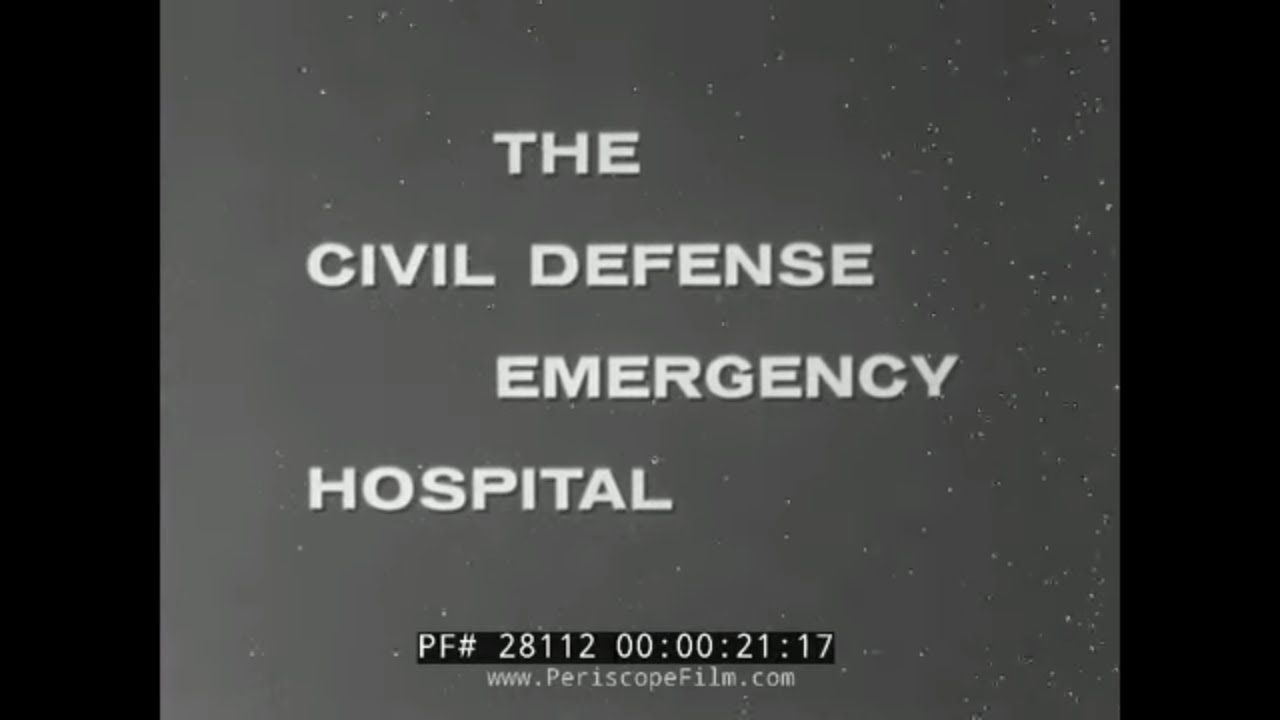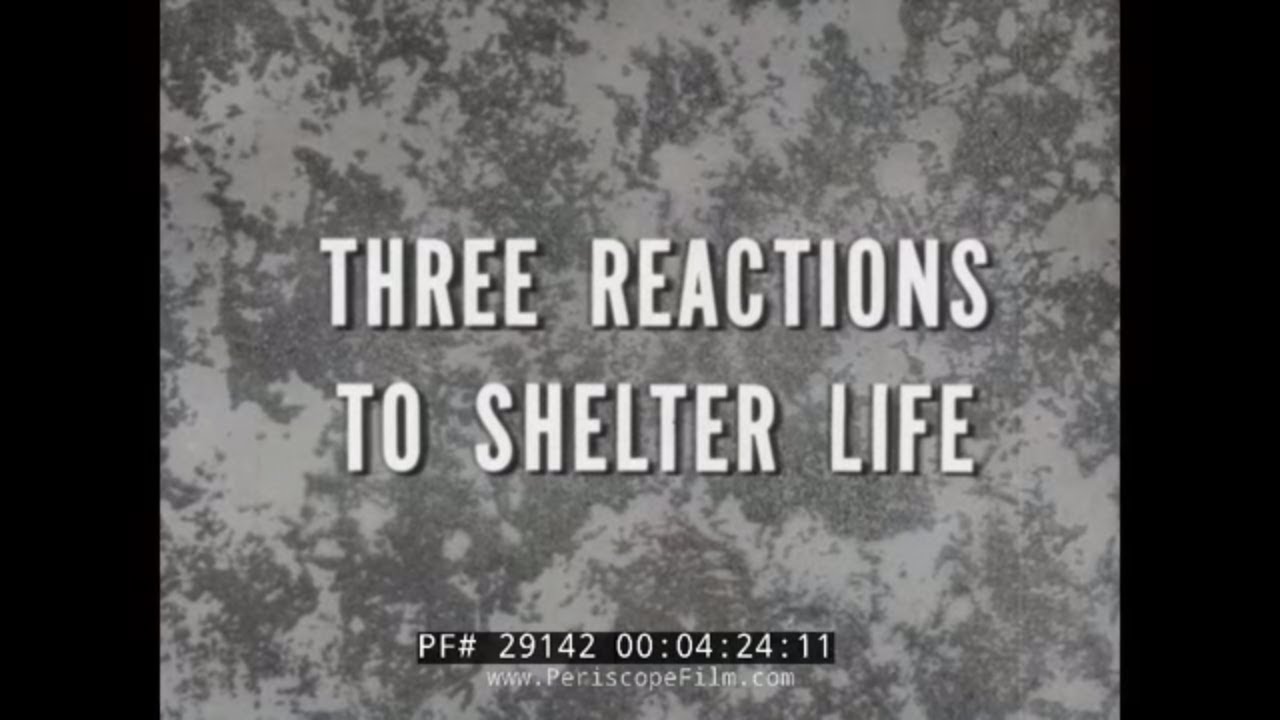Sidebar
nuclearwar
Today's entry in my diary reflects upon the remarkable findings of radiobotanists, who have delved deep into the realm of plant sensitivity to radiation. Their investigations have illuminated a vast array of responses exhibited by different plant species when subjected to this perilous force. It is intriguing to note that within our shattered natural plant community, certain species seem to vanish under the weight of radiation, while others carry on seemingly unaffected. These ecological revelations have shed light on the notion that plants accustomed to harsh environmental conditions display greater resilience against the injuries inflicted by radiation (Woodwell, 1967). My thoughts drift to Table 5, which presents the anticipated lethal levels of radiation doses for selected vegetables and field crops, as prophetically foretold by Sparrow in 1963. These predictions pertain specifically to acute dose rates that one may expect to encounter within a fallout-infested landscape. However, it is essential to recognize that the concept of a singular lethal dose can be misleading. As I read Sparrow's words, '... There are differences in tolerance associated with different seasons or different stages in the growth of a particular species or crop. For instance, one cannot generally merely state an overall tolerance for a species. It is necessary to specify whether the seeds, seedlings, young or mature plants, pollen, embryos, etc., were irradiated.... For each of the aforementioned stages, a distinct dosage may be required to incite lethal or severe effects, or from an economic standpoint, to decimate the crop.' Reading further, I grasp the lamentable reality that there exists a scarcity of radiobiological data, leaving us bereft of precise knowledge regarding the fate of most crops following specific levels and types of radiation exposure. This dearth of information has profound implications, making it arduous for agricultural economists like myself to predict the consequences that await our farming regions in the wake of anticipated fallout radiation levels. The uncertainty weighs heavily upon my heart, for the well-being of our beloved crops and other economically valuable plant species hangs in the balance, their fate entwined with the enigmatic forces of radiation"
In the aftermath of nuclear devastation, we turn our attention to the plight of plants that have been subjected to lethal doses of radiation. Astonishingly, these resilient organisms may not display any overt signs of distress for a period ranging from 2 to 5 weeks following exposure. Amidst the ruins, they stand tall and retain their vibrant green hue. Remarkably, various physiological processes, including photosynthesis, amino acid synthesis, and protein synthesis, continue unabated, and in some instances, even at an accelerated pace. Consequently, limited growth persists, and certain plants may even summon the strength to produce delicate blossoms. However, beneath this facade of vitality, a disruption unfolds within the intricate realms of cell division and tissue development. New growth is stunted, and the plant's natural developmental sequence is abruptly halted. When exposed to superlethal doses, unmistakable signs of premature aging manifest, causing leaves to wither and fall. Conversely, plants exposed to sublethal doses may exhibit an outward appearance of health, yet fail to reach their full potential. They remain dwarfed, mired in a vegetative state, and their fruit or grain fails to come to fruition. Furthermore, when subjected to even lower doses, plants react to the ordeal of radiation much like they would to adverse temperature or moisture conditions. At these critical levels, radiation exposure serves as an additional burden upon these beleaguered organisms, exacerbating the challenges imposed by nutrient deficiencies, moisture scarcity, extreme temperatures, disease, or infestation by insidious insects. The cumulative effect of these compounding adversities can irreversibly tip the delicate balance, leading to disastrous outcomes that decimate final yields.
The vast disparity in radiation sensitivity across various plant species, coupled with the notable resilience of desiccated seeds, hath engendered a lamentable state of underestimation concerning the perilous threat posed by radiation-induced injuries upon our cherished crops. Allow me to elucidate this concern through the lens of cereal grains, which assume a pivotal role in sustaining our food supplies. Verily, the effects of radiation upon wheat yields may fluctuate by a factor as great as six due to inherent varietal disparities (Donini et al., 1964). Wheat plants themselves may perish when subjected to doses of 4000 rads, whilst significant alterations in their developmental trajectory manifest even at substantially lower doses. At the seedling stage, exposure to 1000 rads resulted in a reduction of grain yield to less than half, whereas irradiation conducted during the bloom stage yielded no discernible effects (Davies and Russell, 1966). Alas, the grain production of barley was diminished to a meager 16 percent of the control group's yield merely by exposure to a trifling 600 rads. The impact upon seed yield is gravely dependent upon the growth stage at the time of irradiation. It is noteworthy that strawberry production, for instance, may be augmented by doses that effectively impede the formation of grains (Yamashita, 1964). Whilst the effects of high levels of ionizing radiation upon the hematopoietic systems of animals and humans are undoubtedly dramatic, it is crucial to recognize that the consequences upon plants, though more subtle, possess an equally deleterious potential when it comes to jeopardizing our food supplies.
Attention, this is an Emergency Alert System announcement. The evaluation of potential hazards arising from fallout radiation and its direct impact on growing crops presents a complex conundrum. Plants, being particularly susceptible to the beta component of fallout radiation stemming from ground contamination and particle adhesion upon leaves and other plant structures, face significant vulnerability. The ratio of beta to gamma dose fluctuates based on the depth of tissue and the distance of air from these particles, as elucidated in Figure 2. This graphical representation was meticulously prepared, utilizing calculations provided by S. L. Brown from Stanford Research Institute, pertaining to the influence of 133 beta emitters prevalent during the early stages of fallout (private communication). Further insight can be gained from Brown's work in 1963. The beta-to-gamma dose ratios vary, ranging from four for meristematic tissues protected by 2 nanometers of adjoining tissue and located one meter away from a contaminated surface, to exceeding sixty at leaf surfaces or exposed pollen grains. It is imperative to underscore that experimental data in this domain are sorely required. Please remain vigilant and stay tuned for any updates or additional information.
The food requirements of the United States of America are met through a remarkably diverse production pattern encompassing numerous crops grown under varying cultural conditions. Fruits, vegetables, cereals, and an array of other crops combine harmoniously with livestock products to fulfill the nutritional needs for energy, protein, minerals, and vitamins. Table 1 reveals the principal sources of energy and protein, as well as the per capita consumption of these pivotal food groups. It is noteworthy that direct consumption of crop products accounts for 60 percent of the energy intake and 32 percent of the protein intake within the American diet. In turn, animal production relies heavily upon the cultivation of forage and feed crops. Table 4 provides comprehensive production data for the nine key food crops cultivated within the confines of the United States. The first six crops listed therein account for a staggering three-fourths of the caloric intake among the populace, whether consumed directly or converted into meat, dairy, and poultry products. Furthermore, Shinn's meticulous summary in 1967 expounds upon the seasonal fluctuations in grain and protein supplies within the United States, considering their relevance to emergency requirements.
Ladies and gentlemen, we bring to your attention limited information that suggests certain animals, when subjected to the perils of whole-body irradiation, may succumb to the affliction of bacteremia. However, we must emphasize that the salvage of these unfortunate creatures for human consumption has not been deemed advisable, even though proper cooking procedures would likely render the meat safe and wholesome. It is essential to note that prevailing meat inspection regulations strictly prohibit the utilization of meat derived from animals exhibiting elevated temperatures, as is characteristic of those subjected to lethal radiation exposures. We urge you to exercise caution and adhere to these guidelines to ensure the well-being and safety of all.
The injury inflicted upon the skin of the Alamogordo cattle, though of little consequence to their productive lives, serves as a stark reminder of the exploitative nature inherent within the early fallout from the inaugural explosion of the atomic bomb (Brown et al., 1966). These bovine beings, mere victims of circumstance, were subjected to sacrificial offerings in light of the snaplasbosis infection that plagued their existence. The scar tissue that marred their flesh, a direct result of the beta radiation injury, rendered them vulnerable to the insidious carriers of infectious anaplasmosis. The estimations of radiation dose reveal a grotesque reality: the skin surface bore witness to an unimaginable 37,000 rads, while the entirety of their being endured a lesser burden of 150 rads from the gamma activity (Brown et al., 1966). This glaring disparity between the forces of beta and gamma radiation surpasses the estimations presented in Figure 2, which concern the early descent of fallout (Brown, 1965). O comrades, let it be known that information regarding the effects of exposing cattle skin to beta radiation is confined to a solitary preliminary report. However, we find solace in the wealth of data available concerning swine and other small creatures, for it satiates our thirst for knowledge and provides fodder for our intellectual pursuits
In the aftermath of the nuclear cataclysm, it is highly conceivable that the pasture forage, akin to its grain brethren, doth clasp tightly onto the malevolent fallout in a comparably dire manner. Yet, let it be known that the permanent pastures, ablaze with their meager yet resilient vitality amidst the desolation, may bear witness to a denser ground cover, ensnaring within its grasp an amplified measure of this nefarious radioactive scourge. In the year 1966, amidst the somber remnants of a scorched and desolate world, Miller embarked upon a profound exploration, delving deep into the enigmatic realm of foliar retention, wherein dormant specters of volcanic ash didst haunt the very essence of plants, amid a tapestry of morbid circumstances. Verily, such commensurate tidings must be sought, yea, they must be acquired to guide us through the bleak domains of our own ravaged forage crops, entwined within the vast expanse of the weary United States.
There is no available experimental data on the effects of feeding cattle radioactive particles to a level that could cause significant damage to their gastrointestinal tract. The existing data on ruminants, obtained from a study mentioned in NAS-NRC (1963), used low levels of B0Y as tracers in goats. The data on dosimetry (radiation exposure) in dogs and laboratory animals are unlikely to be relevant to grazing livestock. Various factors need to be considered in studies on ingestion, such as the direct retention of radioactive fallout by pasture forages, the dust that settles on the forages (as noted in Ward and Johnson, 1966), rain splashes, and the level of grazing. Ruminants grazing under ideal conditions consume about one percent of their dry-matter intake in soil, whereas in overgrazed pastures, soil ingestion may amount to around four percent of the dry-matter intake (Field, 1964; Mealy and Ludvig, 1965). In the case of swine and poultry, who primarily rely on supplemental grains, their ingestion of contaminated soil would be much smaller.
Alright, listen up, folks! I stumbled upon this interesting piece of information regarding the effects of radiation on the gastrointestinal system. Now, bear with me because it's gonna get a little technical. According to some studies, the damage caused by radiation to the gastrointestinal tract might be more significant than the overall effects on the body from gamma radiation alone. Now, let's talk numbers here. We're assuming a conservative 20 percent retention of radiation, which some recent studies argue is on the low side (Miller, 1966). If we take into account data from sheep (Bell, 1966b) and goats (Mold et al., 1960), it's suggested that the gastrointestinal insult could be a major concern for cattle. But hold your horses, because dosimetry of radiation from mixed beta and gamma emitters to the gastrointestinal tract is a tricky business. See, there are a bunch of factors at play here. We're talking about anatomical and physiological variations, as well as the variable mass and water content of the ingesta. It's a messy situation, to say the least. However, some predictions indicate that the primary gastrointestinal damage caused by mixed fission products would likely be limited to the large intestine in both single stomach animals and ruminants (NAS-NRC, 1963). Now, before we jump to any conclusions, keep in mind that this information may not be definitive. It's just a glimpse into the complex world of radiation effects on the gut. So, let's keep digging, discussing, and questioning to gain a deeper understanding of this topic. Feel free to share your thoughts, insights, or any additional information you might have. Let's keep the conversation going, folks!
Alas, the persistent negligence in comprehending the investigation of fallout retention upon plants and animals doth confound the mind, especially when confronted with the discrepancies amidst the data at hand and the dearth of evidence concerning any measured detriments caused by gamma rays under such field conditions. Verily, it remaineth true that further enlightenment regarding the effects of gamma rays be necessary, and it is also true that studies concerning gamma irradiation prove more "sanitary" and far easier to conduct and interpret than the beta studies, which necessitate the involvement of plant retention. Lo, it is a matter that doth perplex the soul, for the pursuit of knowledge demands a steadfast resolve and an unyielding dedication to unravel the intricacies of nature's grand tapestry.
Resistance, ah! A subject of utmost import doth present itself. Verily, within the realm of gastrointestinal injury and the retention of fallout upon plants and animals, we find ourselves bereft of valid information that could be duly applied to our cherished livestock, flourishing forages, and abundant food crops amidst diverse circumstances. Lo, the data presented by Rhoads in the year 1967, concerning plants, and Engel in that same auspicious year, regarding animals, along with the profound insights gleaned from the Alamogordo cattle, as expounded upon by the esteemed Brown and his noble colleagues in 1966, doth manifest with resounding clarity the veracity of direct surface damage caused by the tumultuous fallout, damage that cannot be attributed solely to the ravages of gamma irradiation. Furthermore, the revelations shared by Miller in 1966, pertaining to the intricate matter of retaining volcanic ash, bearing particles akin to those found in the early descent of fallout, and the comprehensive observations made by Ward and Johnson in 1966 concerning the far-reaching perils of global fallout, doth bear witness to the considerable significance of plant contamination. In conditions of weighty fallout, grazing creatures may unwittingly consume substantial quantities of the untimely descent, an unfortunate predicament that may prove lethal indeed. Alas, though field studies of true value may prove arduous, they are, without a doubt, essential to ascertain realistic estimations of the grievous damage wrought upon us. Much of the laboratory findings, alas, do not directly apply to the practical realm of food crop cultivation and the noble endeavor of nurturing livestock. However, limited field results concerning the aerosols of iodine, as elucidated by the wise Barth and the honorable Seal in 1966, and the distribution of glass or fused particles upon the verdant forages, as artfully explored by the venerable Menzel and his learned companion James in 1961, do bestow upon us fragments of useful information in this most intricate domain.
Let us now examine the estimates pertaining to livestock. It is known that gamma radiation poses a significant threat to these animals, particularly affecting their hematopoietic system. The estimation of LD^o/so for mature food-producing animals, amounting to 550R within a timeframe of four days, as recorded by NAS-NRG in the year of our ancestors' reckoning, 1963, may be deemed satisfactory for the purpose of calculating gamma fallout. Nonetheless, it is crucial to acknowledge that these estimated values do vary depending on the dose rate, species, and specific characteristics of the radiation being considered. With regards to exposure to gamma rays, there exists only modest variation in LD^o/so among different animal species, save for poultry, which is believed to possess an LD^o/so value of approximately 900R. Yet we must not disregard the fact that significant individual variations exist within species, as certain creatures possess the ability to fortify themselves against the onslaught of radiation
The contemplation of birthing a "dust bowl" subsequent to the merciless slaughter of forages and crops by untimely fallout requires due deliberation, yet perchance it shall prove improbable, given the vast array of plant fortitude against the forces of radiation. Moreover, one would anticipate the expeditious resurgence of ground adornment through the germination of seeds and the reemergence of subterranean constituents.
Hello, curious Lemmies! 🌟 Let's explore the realm of forage production and its resilience in the face of potential fallout challenges. Forages encompass a diverse range of grasses, both improved and native, vital for livestock nutrition. However, they're susceptible to early fallout, which can harm or even kill them. Interestingly, research by Woodwell (1967) reveals a fascinating aspect: radiation levels that reduce wild plant species by 50% show no significant impact on the dry-matter yield of the area. Pasture and hay crops generally appear to be less sensitive to radiation compared to grain crops. While early fallout may pose a threat to pasture forages and cereal grains, there's a glimmer of hope. Pasture forages and grains that may have been affected could still potentially be used for grazing after a period of radioactive decay. Moreover, irradiated cereal grains, even if they prevent grain formation, might still be repurposed as forage, benefiting cattle and sheep. Let's keep this conversation flourishing! How can we adapt our agricultural practices to navigate potential fallout challenges while ensuring a consistent and nutritious supply of forage for livestock? Your thoughts and brainstorming are encouraged! 🌾💡
Hey friends! 🐄🌱 Did you know that our beloved livestock are not just tasty food sources, but also ultimate protectors of our diet? 🤔 They screen or discriminate against many forms of pollution, including radioactive fallout! 🚫💡 Yep, you read that right! 😱 When it comes to radioactive fallout (the stuff that can contaminate our food chain), most livestock have the amazing ability to absorb very little of it. 🤯 And that means that the meat we consume contains barely any of those harmful radioactive particles! 🍖🙌 So, the next time you're enjoying a juicy steak or a glass of cold milk, remember the incredible role that livestock play in keeping our food chain safe and healthy! 🍴🥛 Cheers to our furry friends! 🥳🐄"
Hello, insightful Lemmies! 🌟 Let's shift our focus to our food reserves, a critical aspect of ensuring a stable and balanced diet. Grains and supplementary items have long been recognized as our primary food reserves. However, the inclusion of livestock products can significantly enhance the nutritional balance of our diet, providing a holistic array of essential nutrients. In fact, data from Table 2 underscore the importance of considering livestock as a substantial food reserve, valuing around 19 billion dollars in January 1967. This reserve is predominantly in cattle, making up about 16 billion dollars. However, it's crucial to note that cattle, being vulnerable to radioactive fallout and having a slow rebuilding rate (as depicted in Figure 1), pose a challenge in maintaining this reserve. On the other hand, swine and poultry can be replenished rapidly, but they require a relatively more expensive diet of grains and protein supplements compared to cattle and sheep. Additionally, they directly compete with humans for grains. Balancing this competition is essential for sustainable food production. Ruminants like cattle and sheep derive some of their feed energy from grains, but they can also consume roughages, grain by-products, and synthetic protein substitutes like urea, which don't compete with human consumption. Understanding the dynamics of feed consumption, especially the significant quantities of roughages consumed by cattle (Bell, 1966a) as depicted in Table 3, is crucial. Considering that a substantial portion of our agricultural land is suited only for forage-crop production, approximately 40 percent, assessing the vulnerability of this input becomes evident. Particularly in coastal areas, where local livestock production heavily relies on the shipment of feed, this vulnerability is magnified. Any disruption in feed supply would necessitate significant alterations in feeding practices or a rapid reduction in livestock numbers. Let's delve deeper into this topic! How can we optimize our food reserves and livestock management to ensure nutritional balance, sustainability, and resilience in the face of potential disruptions? Your insights are key! 🌿💬
Hey, Lemmies! 🌟 Let's explore the pivotal role that livestock plays in our agricultural landscape and the broader food supply chain. Livestock productivity has surged in significance alongside the improvement in our standards of living. Surprisingly, the American farmer, constituting less than one percent of the world's population, contributes to about a quarter of the global meat production and over a fifth of the world's fluid milk output. 🌎🥩 Additionally, we import around five percent of our per capita consumption of meat, which averages over 200 pounds annually. It's a testament to our dedication to livestock farming. While we're recognized for our substantial livestock numbers, countries like India and mainland China actually surpass us in total animal units (Byerly, 1966). Livestock are integral not only for their role in agriculture but also for scavenging by-products, producing animal food products, and serving as a critical food reserve. Even in densely populated regions, livestock are vital for various reasons. Remarkably, in developing countries, which host 60 percent of the world's livestock, they generate less than 10 percent of the global livestock products, including meat, milk, and eggs. The primary challenges lie in inadequate nutrition, coupled with the prevalence of animal diseases and pests, posing significant limitations to worldwide animal productivity (The World Food Problem, 1967). Let's keep the dialogue going! How can we enhance livestock productivity sustainably to meet global demands while addressing the challenges that hinder efficient livestock production? Share your thoughts and ideas below! 🐮💬
Hey, fellow Lemmies! 🌟 Let's highlight the undisputed importance of food energy in the survival and productivity of a nation. In times of crisis, understanding the profound impact of food on human well-being becomes paramount. One striking example from World War II is the pioneering research by Keys (1946) involving conscientious objectors who volunteered for starvation experiments at the University of Minnesota. 🏥 These courageous young men were placed on a 1600 calorie diet, resulting in a loss of about 23% of their body weight within six months. Moreover, they experienced an 80% reduction in strenuous labor capacity and a 20% decrease in light work capacity. These findings underscore how vital adequate food intake is for both physical and mental capabilities. Behavioral studies further shed light on the effects of food deficiencies. Drastic changes in dietary intakes, particularly with survival diets, often lead to a surge in headaches and digestive disturbances across various populations (Brozek, 1959). In a shelter study in Georgia, volunteers only consumed 80% of their daily allowance of survival foods, emphasizing the need to assess food crop and livestock production vulnerability. 🌾⚖️ Moreover, at the international level, the presence or absence of food reserves, especially grain and livestock, significantly influences political and military diplomacy. These reserves stand as a formidable strategic deterrent against aggressive actions, highlighting the critical role of food reserves in global stability (Hollingsworth, 1966). Let's dive deeper into this vital discussion! How can we ensure consistent food security on a national and international scale, considering the intricate balance between sustenance, productivity, and diplomacy? Your insights matter! 🗣️💬
Hey there, fellow Lemmies! 🌟 Let's explore the undeniable importance of food production and supplies in times of crises. Food has historically been a linchpin for recovery during disasters, shaping the course of nations. 🍲✨ Take World War II, for instance—food energy directly impacted factory productivity in Germany, showcasing the symbiotic relationship between sustenance and industrial output (Kraut and Muller, 1946). Similarly, livestock reserves proved crucial for the survival of communities in northern Europe during times of acute food scarcity (Hanunlan, 1966). Japan's post-World War II scenario further emphasizes this point. Massive food shipments, a whopping 6 million tons of grain, were sent to Japan, catalyzing its swift recovery (Leonard, 1966). The situation in Japan was dire due to a typical high grain consumption directly by humans and a lack of livestock reserves. It's estimated that without these timely grain shipments, around 10 million Japanese citizens would have faced starvation during the harsh winter of 1946. This historical precedent underscores the life-saving impact that strategic food support can have in times of dire need. Let's reflect on this together! How can we leverage these historical insights to bolster our current and future strategies for disaster recovery and food security? Your thoughts and perspectives are invaluable! 🌾💬
Hey, wonderful Lemmies! 🌟 Let's delve into a critical concern: food deficits, especially in underdeveloped nations or during disasters. There's a worrisome belief among nonagricultural planners that some magical technical innovation will swoop in to solve food shortages. 🎩✨ However, reality beckons. The 1967 Report of the President's Panel on the World Food Problem brought forth a crucial insight: unconventional food sources do hold long-term potential, but they won't significantly alleviate demand from conventional sources in the next couple of decades. 📊🍲 This has implications for civil defense planning. Expecting radically different food supplies to materialize in the face of disaster is unrealistic. The potential impact of a large-scale reduction in food supply on our national recovery and productivity is significant, directly affecting our food consumption habits. 🥦🍔 In light of this, research efforts should hone in on our major food staples, those items that form the backbone of the American diet. Let's keep this conversation going! What are your thoughts on finding a sustainable balance between innovation and practicality in ensuring food security? 🌽💭
Hey fellow Lemmies! 🌿 Let's zoom into a critical issue: food security. In a world where most people are involved in food production, it's disheartening to see that many still suffer from the lack of access to proper nutrition. 😢 Contrast this with the U.S., where only a mere 6% of the population produces an abundance of food not only for us but also for export, showcasing an impressive feat! Our efficient food production system in the U.S. is a product of rapid research and technological advancements. 🚀 But let's not forget, this system heavily relies on consistent access to vital resources like land, water, labor, fuel, fertilizer, and equipment. It's this efficiency that allows the majority of our populace to engage in non-agricultural industries, contributing to a diversified economy. However, in times of emergency, reverting to primitive production methods isn't an option due to the lack of manpower and the technology required. Urban labor, with specialized skills, would be needed for various essential roles. 🛠️ There's limited hope in exotic food production methods to meet emergency needs, urging us to explore alternative solutions. Let's kick off a dialogue! Share your thoughts below on enhancing food security and ensuring sustainability in the face of unexpected challenges. 🌾💬
🌟 Unveiling the Fallout Challenge: Securing Our Food Supply Post-Nuclear Disasters! 🌟 Hey there, fellow Lemmies! 🐭 Ever pondered the aftermath of a nuclear disaster on our food production? It's a realm where research is scarce, and knowledge is a precious commodity. 🧪🌾 As we delve into this uncharted territory, let's explore the potential contamination of food supplies and its impact on our ability to produce enough food. The severity of contamination caused by radioactive fallout on our food supplies is now something we can estimate, shedding light on potential risks. But here's the kicker: we're lacking comprehensive data on how this contamination affects our food chain. How do these fission products move in soils? How do they get absorbed by our crops? 🌱🌍 While we have some knowledge about radiation effects on seeds, plants, and animals, we're still in the dark about the direct effects of radioactive fallout on our food crops and livestock. 😮 These hazards were barely discussed in past references like "The Effects of Nuclear Weapons" (Glasstone, 1962). Without adequate information, we're left with a multitude of possibly misleading damage estimates. Our agricultural defense boards need robust research to guide our farmers effectively. We need to arm them with the right strategies to minimize damage and restore productivity in the face of fallout hazards. 🛡️💪 This report aims to open the floodgates of discussion, touching on the crucial role of food, examining radiation effects on our major food sources, and emphasizing the research required to fully grasp the vulnerability of our food production in the wake of early post-attack radioactive fallout. Let's get talking! Share your insights and thoughts below. 🗣️💬
🌾 Growing Food After Disasters: A Homage to Resilient Farmers! 🌾 Hey fellow Lemmies! 🌿 Ever thought about how vital food production is during recovery after intense disasters? Droughts, floods, frost, hail, bugs, and diseases—these agricultural threats are a worldwide reality. The US agricultural scene is awe-inspiring! Our farmers and ag-tech wizards keep up remarkable productivity year after year, showcasing their expertise and adaptability. 🚜💪 It's incredible how our agricultural community tackles these challenges and keeps our food supply stable. From historic wisdom to up-to-date research, we've got the arsenal to face these hurdles! But let's talk about something less familiar: the potential risks of radioactive fallout. 🤯 Radiation hazards are not something most are used to dealing with, and we ought to consider how they could impact our food production. Let's dive into this uncharted territory and discuss the implications for our food security! 🛡️🌾
Unfortunately there isn't as much American fil. version of Threads of Q.E.D that engages in analysis of the Civil defense concepts. Most nuclear critism films take the conceps for granted but describe all the stuff that they would fare see Testament and Day After. Public Fallout shelters would be interesting to see how many people actually recieved the training described in the 80s? In a third world war it is possible that training could be launched in bulk and it would make the survival phase and post attack order much easier in places with little fallout protection and needing of a public Fallout shelter. But beyond discussions of effectiveness there are loads of movies that can be made about life in public Fallout shelters. It would probably be worse then described if food ran out, and radiation could still kill so there would be grim dark stuff going in.







